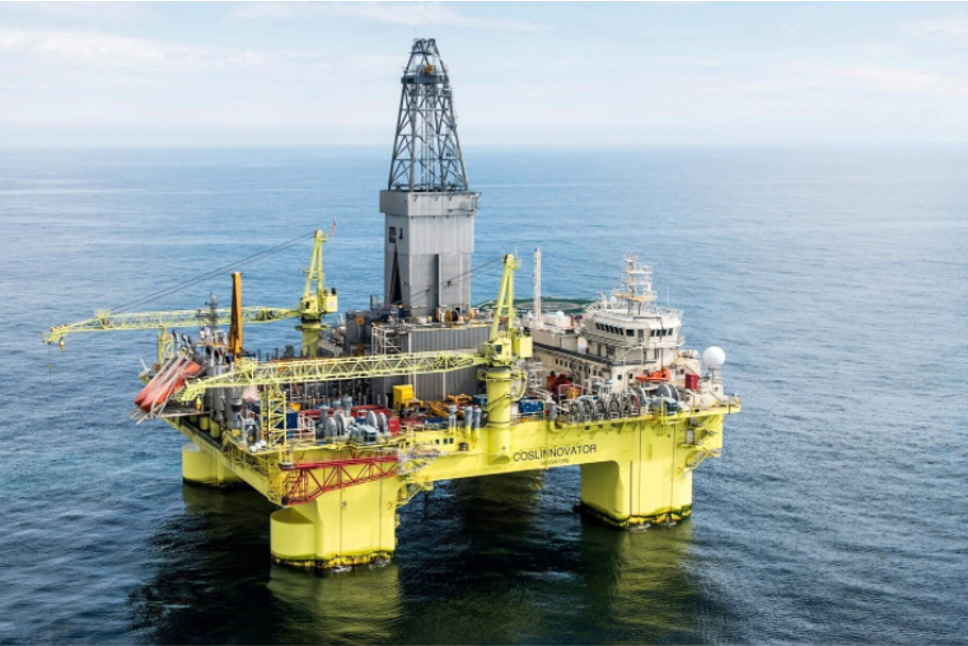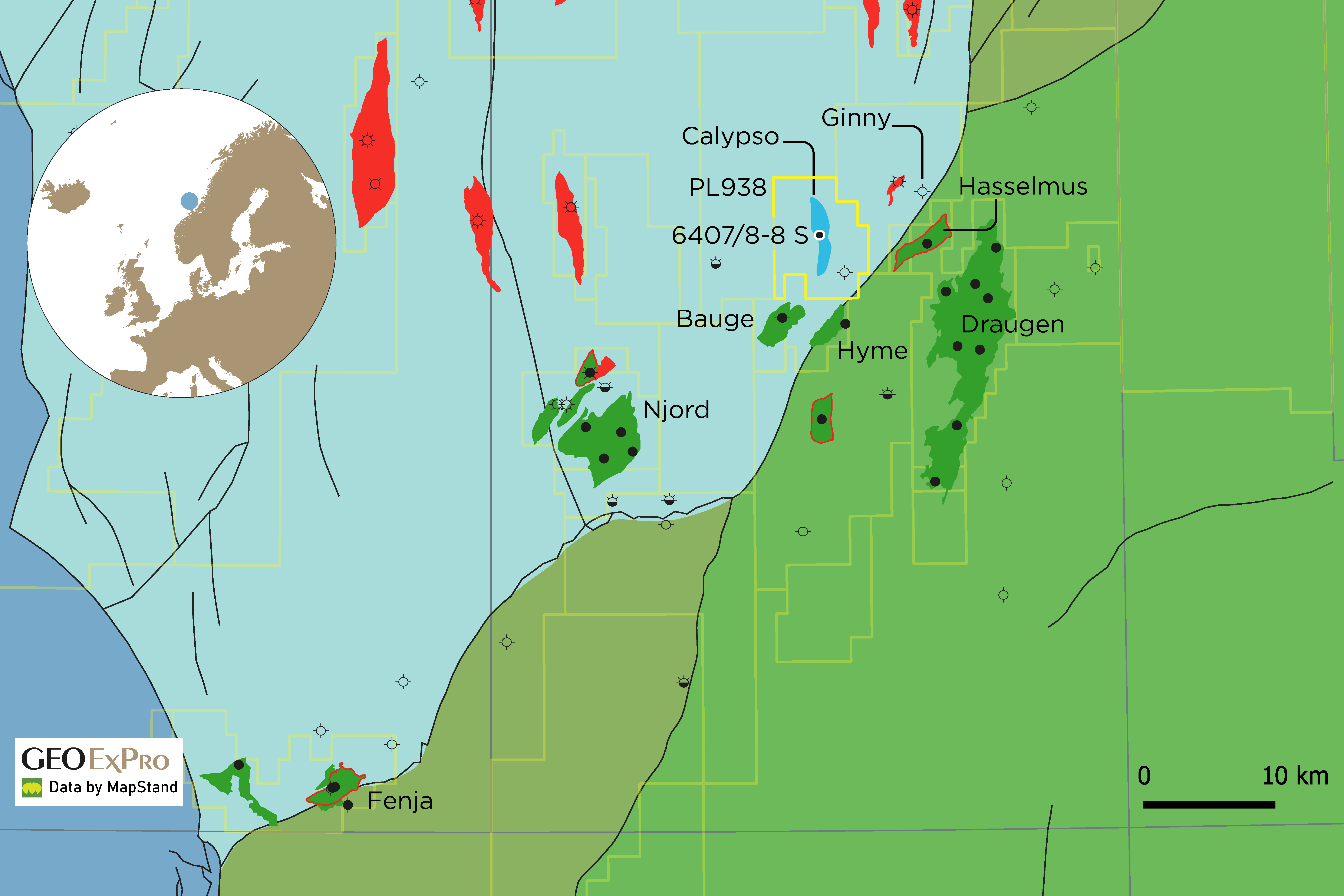About three weeks ago, we already reported on the 15/12-26 (Ilder) well, shortly after it had spudded in the Norwegian North Sea. Based on the information available at the time, we could reconstruct that the targeted sand was an Upper Jurassic sandstone at the crest of a domal structure underpinned by a Zechstein salt diapir.
Based on a cross-section through the Ilder prospect OKEA published in their Presentation of the first Quarter 2021 results this week, a few more inferences can be made.

The primary driver of the closure is indeed a Zechstein salt diapir. From the southern margin of the diapir, a major fault propagates and radiates upward in the stratigraphy. This fault also juxtaposes Upper Jurassic Ula Formation sandstones against Draupne and Heather mudstones, which means that the target is more complex than just a 4-way dip closure. The same situation applies to the northern margin of the target, the difference being that the fault doesn’t seem to propagate further than the base of the Lower Cretaceous.
From this cross-section, it may be concluded that especially the fault delineating the southern margin of the closure forms an exploration risk, as it needs to be a sealing fault in order to prevent fluid migration all the way to the Cenozoic succession.
The cross-section also highlights how unlucky Den Norske Stats Oljeselskap was when it drilled 15/12-2 in 1976, as it just missed the target by a few tens of metres. Of course, it still needs to be seen if operator Harbour (the NPD uses Chrysaor Norge AS) will prove the existence of hydrocarbons in the mapped closure, something we will probably find out very soon.
Press releases
Similar to the Jerv well, where OKEA was a partner too, press releases will be issued as soon as hydrocarbons are being found. The reason for this, as Andrew McCann from OKEA explained to expronews in a recent call, is that small listed companies such as OKEA simply have to publicly release this type of information even when no full analysis of the well results has been completed yet. Bigger listed companies for whom the result of one exploration well is not of material impact to the financial situation are not required to do this, but for a relatively small player like OKEA this is a mandatory exercise.
We published an article following the first OKEA press release on the Jerv well where the company announced that hydrocarbons were found, stating that it would have been better to manage expectations given that pressure depletion was still a high risk. However, as Andrew McCann explained, there was no further detail to publish at the time because it wasn’t available. Pressure depletion was one of the risks for sure, but equally the full thickness of the reservoir was not known yet. Therefore, these press releases should be regarded as a notification and investors should always wait making any decisions until the full well results are published.
Let’s hope that we will soon hear positive news on Ilder.
HENK KOMBRINK





